SRAM Launches XPLR, Doubles Down on Single Chain Rings
It’s pronounced “one-by” and it’s spelled “1x.” It means one chain ring in the front, attached to your bike’s crank, and there’s no front derailleur because there’s nothing to shift up there.
While it is and will remain a robust maker and seller of 2x systems SRAM is the king of 1x, and today SRAM has announced a new platform built around the 1x theme. It’s called XPLR and its pronounced “explore.” SRAM is a little touchy about making sure it’s pronounced correctly, probably because its AXS platform is pronounced “access” rather than “axis” and SRAM didn’t make that as clear as it could have a few years ago when that platform was launched. So, get this right! Explore!
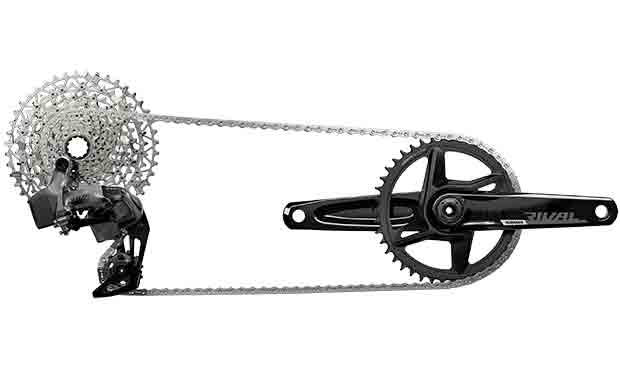
The XPLR platform is not SRAM-only; it’s a suite of products across its sister brands Zipp and RockShox. This is a gravel play, although it’s certainly got a place in road or, just as likely, tri and if you look at the pics of the bikes ridden by Jan Frodeno and Lionel Sanders in the (2x) Zwift Tri Battle Royale race in Germany last month you’ll see both of them riding 1x SRAM groupsets on their bikes. These gents were riding 10-25 and 10-28 cassettes, 12-speed, which is all you need if you’re riding the flat valleys of the Allgäu region, which they were. The new XPLR platform stretches the capacity of 1x, because the XPLR cassettes announced today are (12sp) 10-36 and 10-44. These cassettes make a 1x bike possible for us mortals who also race triathlon.
Would XPLR Gearing Work for Road and Tri?
A pretty popular set up on a traditionally-shifted tri bike would be 52×36 chain rings in front, and a 11-28 cassette in the back. That 52×11 is a 124” gear on the tall side, and that 36×28 is a 34” gear in the back. That gearing represents a 365% range (the largest gear is 365% of the smallest gear, in gear inches). What is the range of the new XPLR cassettes? That’s easy to calculate. The 10-36 cassette gives you a 360% range, and the 10-44 cassette a 440% range. As you see, that 10-36 is almost the equal, in range, of 2x gearing typical in tri.
How big is the range of that 10-44, if expressed on a 2x bike? Let’s say I was riding a really hilly course, and I’m not that strong, and I want a really wide gearing range. I might put a 50×34 chain ring set on the front, and an 11-34 on the back. That gives me what is called a 1:1 (“one to one”) gear in the back, which is the gold standard for low gearing on a road bike. Only very recently could you get 1:1 on any road drive train. Back to that 2x: The low gear, that 34×32, is a 28” gear, and the high gear, the 50×11, is a 120” gear. That represents a 428% gear range, still not as rangy as that 10-44 cassette on SRAM’s new XPLR group.
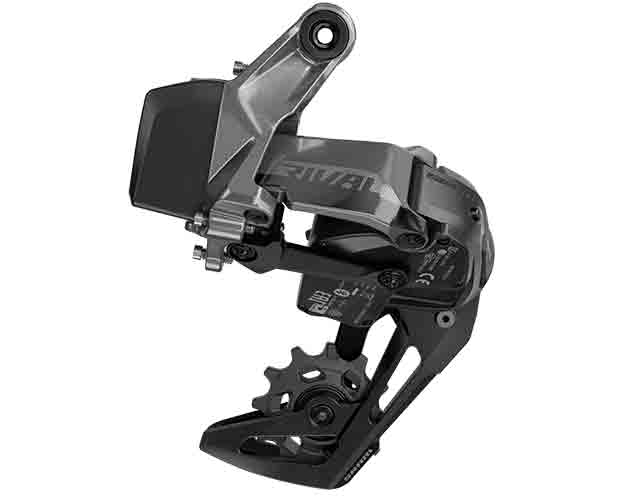
The XPLR cranks are available with a 38-tooth chain ring, or larger, up to 46 teeth. That largest ring paired with a 10-tooth cog gives you a just-barely-tall-enough 121” large gear. That’s bigger than a 50×11, but not quite as big as a 52×11. Interestingly, the RED and Force cranksets are available in 165mm to 175mm crankarms, in 2.5mm increments. The Rival is available doiwn to 160mm, and continues with 165mm, 170mm, 172.5mm, 175mm. Hmm. This collection is getting ever more tri-interesting to me.
The Undefined Use Case
I’m talking “use case” here, and this is one area where SRAM and Shimano don’t quite see things the same way. Shimano believes that gravel deserves its own groupset, with unique tech and features. If I can channel my inner SRAM, it believes that a part is a part, with its discrete function, and the bike maker or the end user decides when and where to use that part. This isn’t a punt. It’s more a case of, “What does [blank] mean to you?” As in, “What does gravel, or road, mean to you?” That is not straightforward. For example, Cervelo’s recent bikes are not just products, but thought experiments. Its Caledonia is wildly popular, but it’s not close to a traditional road bike. It’s a classics bike; a road bike for rideable dirt; the ultimate bike for all conditions. That sounds kind of like gravel. The Áspero is Cervelo’s gravel bike, but it’s not that much gravellier than the Caledonia. Cervelo's bikes live along a gradient, from road race to hard core gravel.
The XPLR Collection places more tools in the chest of companies that approach bikes like Cervelo does, who’re looking for the precisely correct part for the bike contemplated. This could very easily be a road or tri bike, and XPLR is more around a road motif. I say this based on one part: the chain. XPLR uses SRAM’s Flat Top chain, which is its road chain. SRAM is trying – again, this is my own projection – to take a very popular gravel platform and wrestle away from MTB and more toward road. That very popular platform is called the “mullet config” and you get it by putting a SRAM Eagle (an MTB platform) on the rear of the gravel bike (chain, cassette, rear derailleur), and a road groupset on the front of that bike (crankset, bottom bracket, shifters). This gives you a drop-bar, road-Q-factor, road-motif bike (which is what gravel is) but with really low gears and 1x shifting. This is a supremely cool set up, and what I have on my gravel bike.
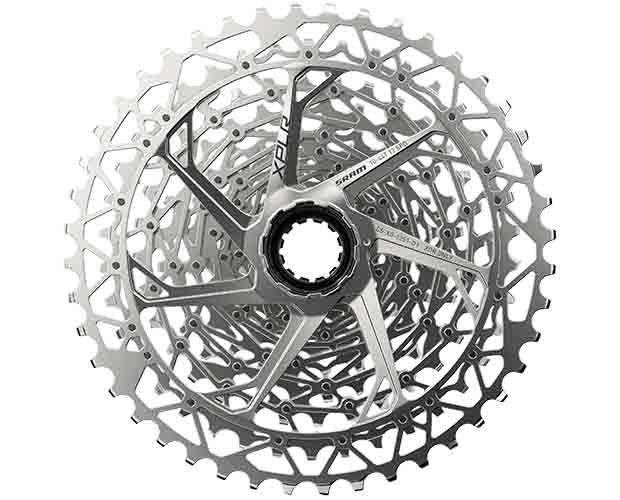
But… the mullet is a mongrel groupset, and XPLR civilizes it somewhat, which is probably necessary for two reasons: No road or tri bike maker is going to put an MTB derailleur on its bike; and there has been a kind of missing gear range in road and gravel 1x that the XPLR 10-36 and 10-44 cassettes fill. If you consider that aforementioned Caledonia as an example, that bike has really low gears for a road bike. An XPLR group would be a really elegant solution on a bike like the Caledonia, because fits the Caledonia’s gearing theme; it’s road rather than a road/MTB mishmash; and it will bring the complete bike price down a little because of the lack of a front derailleur.
The XPLR Collection is available in Red, Force, and Rival. It’s electronic, and in my book there is just no going back to mechanical. This is another reason to consider this a pretty good option for tri: If you’re hoping to get an electronically shifted tri bike down to, say, $3,600, you have at least a shot at it with SRAM’s XPLR platform at the Rival level. Yes, the Rival crankset is a little weighty, but you save that right back with the omission of the FD (though you add back a little of what you save with that larger cassette). What you really add back is: no more missed shifts! No more derailments. Very intuitive shifting: you shift the left shifter, the chain moves left; shift the right shifter and the chain moves right. With XPLR SRAM has made a shotgun suite of parts and aimed it mostly at gravel, but I think lot of the the pellets hit tri.
The Defined Use Case
Now I have to repent from what I wrote above, about SRAM’s ambivalence toward use case. If you have any question about the use case for the XPLR Collection, consider the Zipp and RockShox parts of the XPLR launch. And, look, this is pretty new for SRAM. Typically these sister brands do their thing, and SRAM does its thing. Yes, there are some crossovers. Zipp makes a product called Vuka Shift AXS 90, and it’s a wireless electronic shifter that replaces a SRAM bar-end shifter. It’s an exception to a rule. The XPLR Collection is the first time I can think of where the sisters all got together to participate in one collection. Zipp’s contribution to XPLR is a wheel that skinnies down what it’s making for MTB, and presents it for gravel. The rim is flatter – without a deep section that’s 30mm, 40mm, 50mm – and it’s got its own built-in suspension system (because the rim can flex or twist rotationally under load).
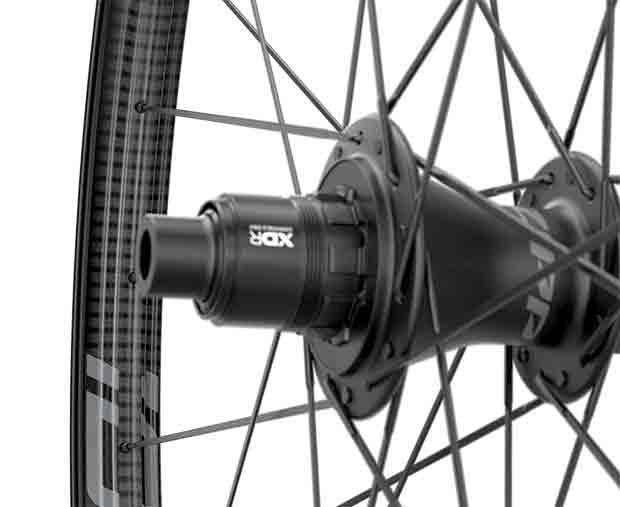
This wheel is called the 101 XPLR and that suspension system is what Zipp calls its Moto Technology. It’s made with a 27mm internal bead width; it’s got a hookless bead; and is made in both 650b and 700c sizes. It is not compatible with road or tri applications. The tires for this wheel start at perhaps 35mm in width, and with that sort of internal bead width I can’t imagine why you couldn’t put 55mm or larger tires on that wheel. So, 35mm to 60mm, that seems the range, and were it me I’d put 35 to 40mm on the 700c wheelsize, and 50mm and wider on the 650b wheelsize.
The 101 XPLR violates what I said SRAM does. Remember, SRAM (according to me) makes parts that function in discrete ways, and the bike builder or end user chooses the part that suits the need. In other words, the bike builder – not the component maker – selects the case, and SRAM makes the “tools.” But the 101 XPLR is the first “purpose built” wheel that Zipp has made for gravel. Previously, we just put a 303 or a 353 or whatever road wheel we liked on our gravel bikes, because the rims were tank strong; they could be ridden tubeless; they remained in true; and were wide enough for gravel tires. This new wheel is not a road wheel repurposed for gravel. It’s a gravel wheel.
Zipp also introduces a gravel tire and it’s the G40 XPLR 40mm, and Zipp kind of has to do this because of the slow tire industry changeover from ETRTO-compliant hooked to hookless. Fine.
There is also a Zipp handlebar, the Service Course SL-70 XPLR, and it’s typical of gravel bars these days, with a 5° flare, a short reach (70mm), a very shallow drop (115mm) and these bars are creeping into road as well. I haven’t seen this bar, but users who build up their own bikes need to be carefull when choosing bars these days, because a lot of bikes are routing their hydraulic lines through the stem, and the bar has to have a nice bike hole in the center section for hose routing.
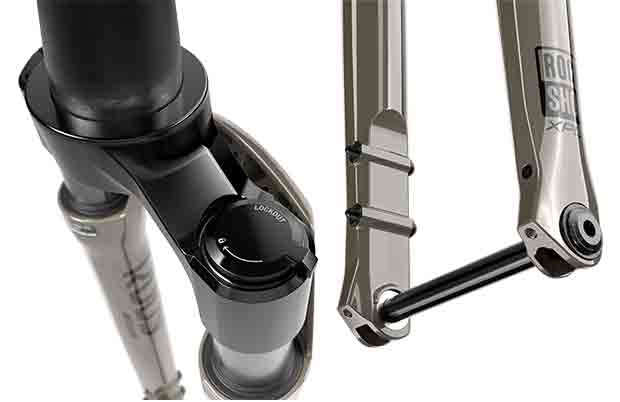
RockShox wants to play as well, and it does with a new basically road/gravel suspension fork. I’m ambivalent. Unconvinced. But teachable. People whose judgment I trust rave about their Lauf forks on their gravel frames. The RockShox fork is called the Rudy, and it appears it’s going to add maybe 5mm of height, from the front axle to the crown, versus what is typical among gravel bike makers. However, this again is a tricky. I believe the Lauf Grit has an axle-to-crown height of 417mm which, combined with a 6mm sag (the amount the fork depressed when weighted with a rider), gives the bike an equivalent of a 411mm spec.
That axle-to-crown measure has been a moving target, as road tires have gotten wider (and taller), and then gravel came along. Typical axle-to-crown distances these days on the road bikes I like to ride are 375mm to 380mm (in the old days it was more like 367mm to 370mm). Gravel bikes like the Cervelo Áspero have an axle-to-crown that is 390mm; the 3T Exploro’s is 395mm. Some other gravel bikes have a much larger axle-to-crown, based on what the intended tire radius is (if you put a 47mm tire on a 700c wheel the tire will hit the bottom of the fork crown unless you make room up there). You’ll want to make sure a suspension fork is geometrically compatible with the frame you’re interested in riding. The Rudy is, again, purpose-built, it’s a gravel fork, it’s got gravelish dimensions (steerer, thru axle, axle-to-crown), it’s lighter, but it’s got a max tire width of 50mm and if you need suspension you might be riding a 650b wheel with wider tires. This could make the Rudy a deal killer. (I'd like to see if i could squeeze a 53mm Schwalbe G-One Bite in 650b between the legs of this fork. Then it wouldn't be a deal killer for me.)
There is 30mm of travel to the Rudy fork, and is offered in two offsets: 45mm and 51mm.
And Rounding Things Up
Here's SRAM's page on XPLR and if you go there it's very obviously a gravel play. But bike makers have a way of deciding on their own how parts are to be used, and to its credit SRAM has done a pretty good job of facilitating that. I'm not so sure this isn't a tri collection as well, especially when you pair this with the big price break electronic shifting and 12-speed just got with the release of Rival AXS. There are some hiccups, regarding the non-wireless nature of SRAM's tri shifters (Shimano is no better on this), but I'll have more to write on electronic tri shifting very soon.


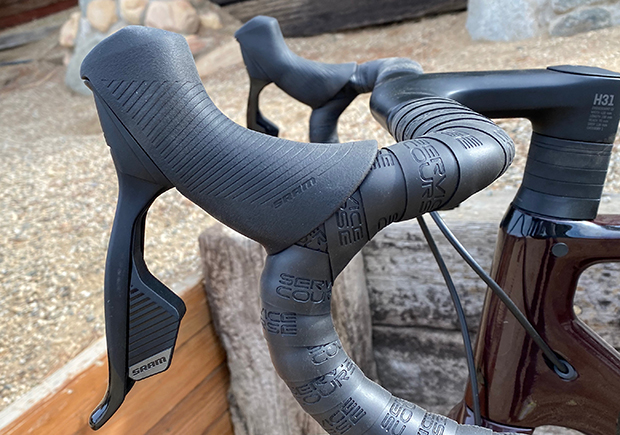
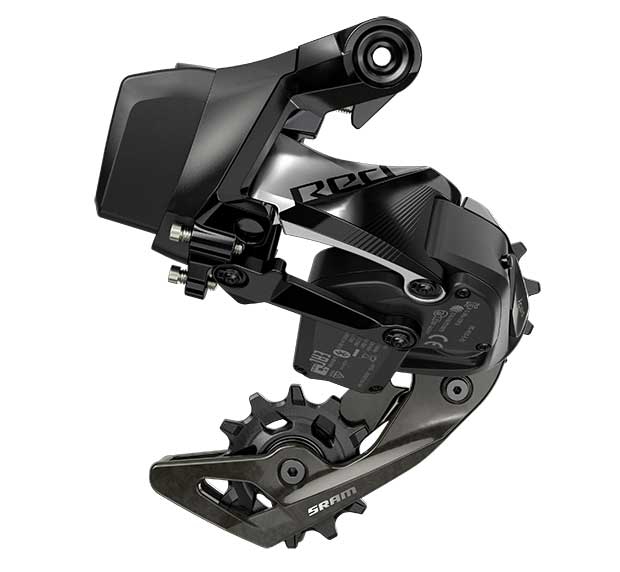
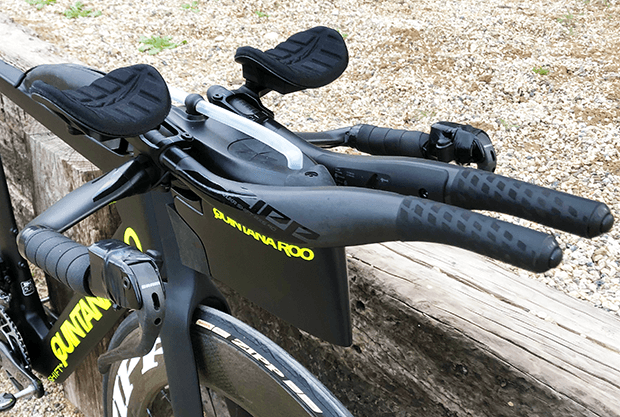
Start the discussion at forum.slowtwitch.com